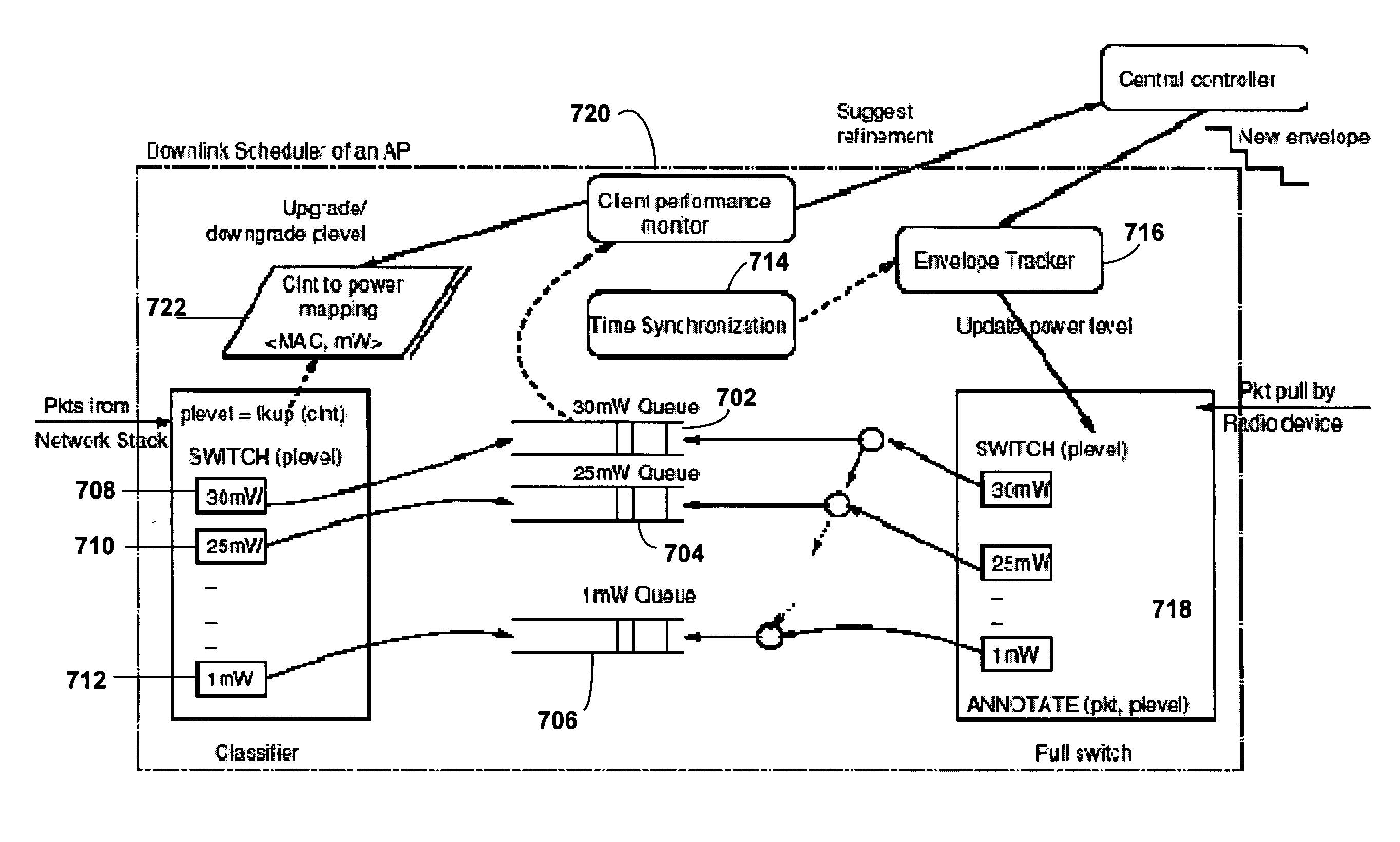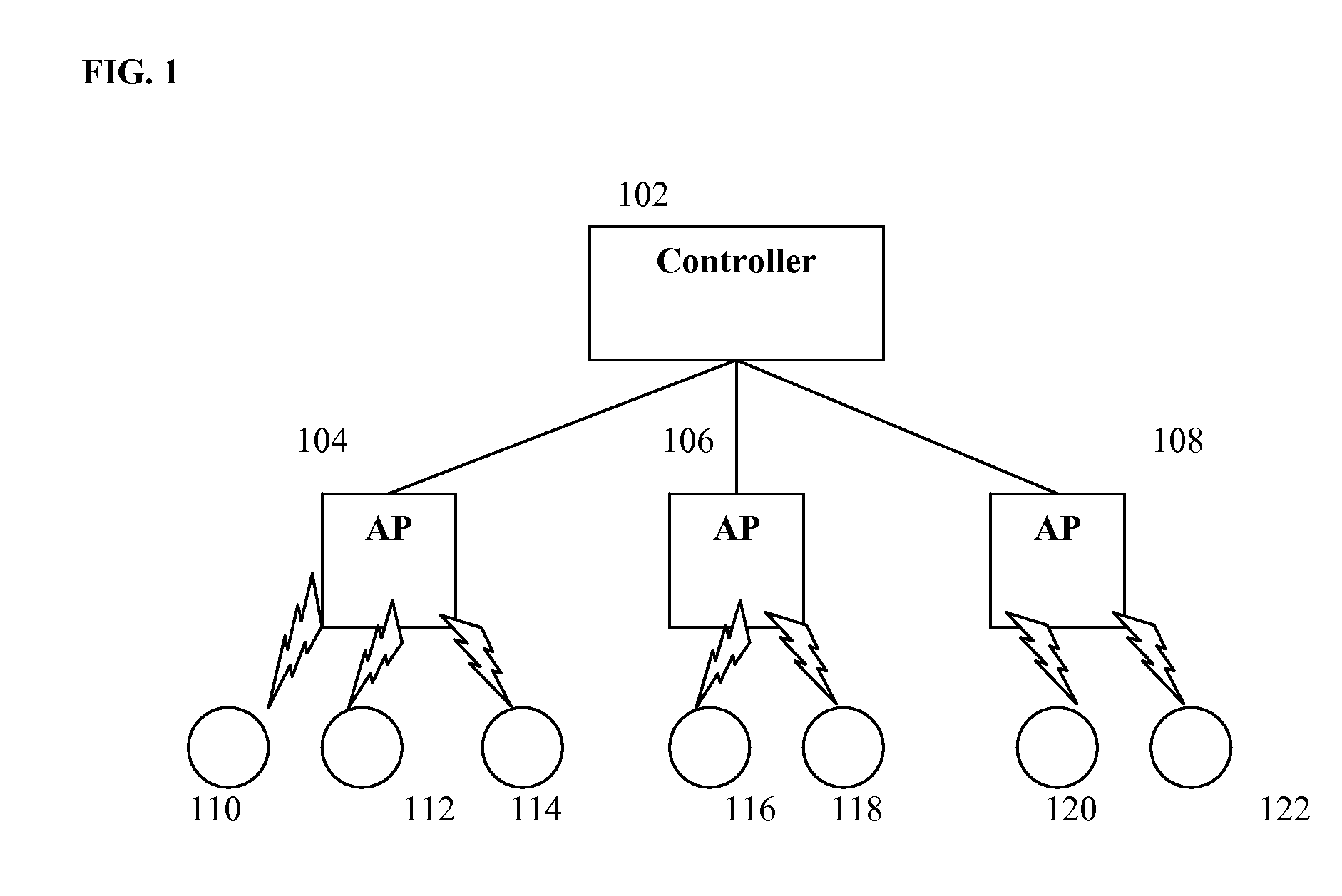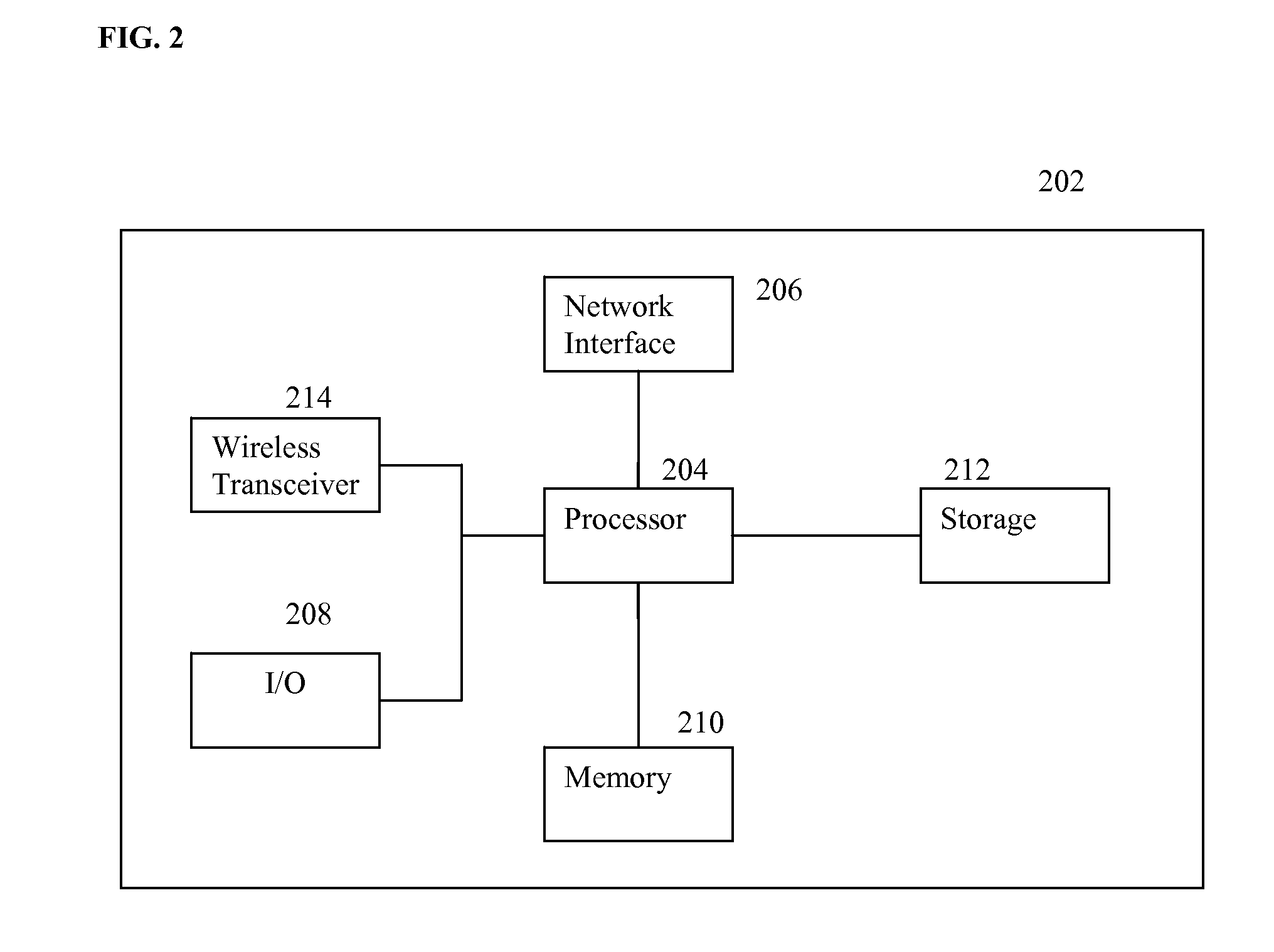Method and System for Dynamic Power Management in Wireless Local Area Networks
a wireless local area network and dynamic power management technology, applied in the direction of synchronisation arrangement, wireless commuication services, instruments, etc., can solve the problems of increasing packet collision, reducing overall network throughput, increasing contention for transmission channels, etc., and achieve the effect of improving spatial reus
- Summary
- Abstract
- Description
- Claims
- Application Information
AI Technical Summary
Benefits of technology
Problems solved by technology
Method used
Image
Examples
Embodiment Construction
[0016]The present invention is directed to improving spatial reuse in a wireless local area network (WLAN) by per-client dynamic power management. Embodiments of the present invention are directed to per-client dynamic power management in a managed WLAN, in which all of access points (APs) are under the same administrative control.
[0017]FIG. 1 illustrates an exemplary managed WLAN. As illustrated in FIG. 1, the WLAN included APs 104, 106, and 108, which provide wireless network access to clients 110, 112, 114, 116, 118, 120, and 122. A central controller 102 communicates with each of the APs 104, 106, and 108. The controller 102 can be communicate with to the APs 104, 106, and 108 wiredly or wirelessly, in order to transmit administrative instructions to the APs 104, 106, and 108. The APs 104, 106, and 108 independently schedule and transmit data packets to their respective clients 110, 112, 114, 116, 118, 120, and 122, using a wireless protocol, such as 802.11 a / g / b. The APs 104, 1...
PUM
 Login to View More
Login to View More Abstract
Description
Claims
Application Information
 Login to View More
Login to View More - R&D
- Intellectual Property
- Life Sciences
- Materials
- Tech Scout
- Unparalleled Data Quality
- Higher Quality Content
- 60% Fewer Hallucinations
Browse by: Latest US Patents, China's latest patents, Technical Efficacy Thesaurus, Application Domain, Technology Topic, Popular Technical Reports.
© 2025 PatSnap. All rights reserved.Legal|Privacy policy|Modern Slavery Act Transparency Statement|Sitemap|About US| Contact US: help@patsnap.com



